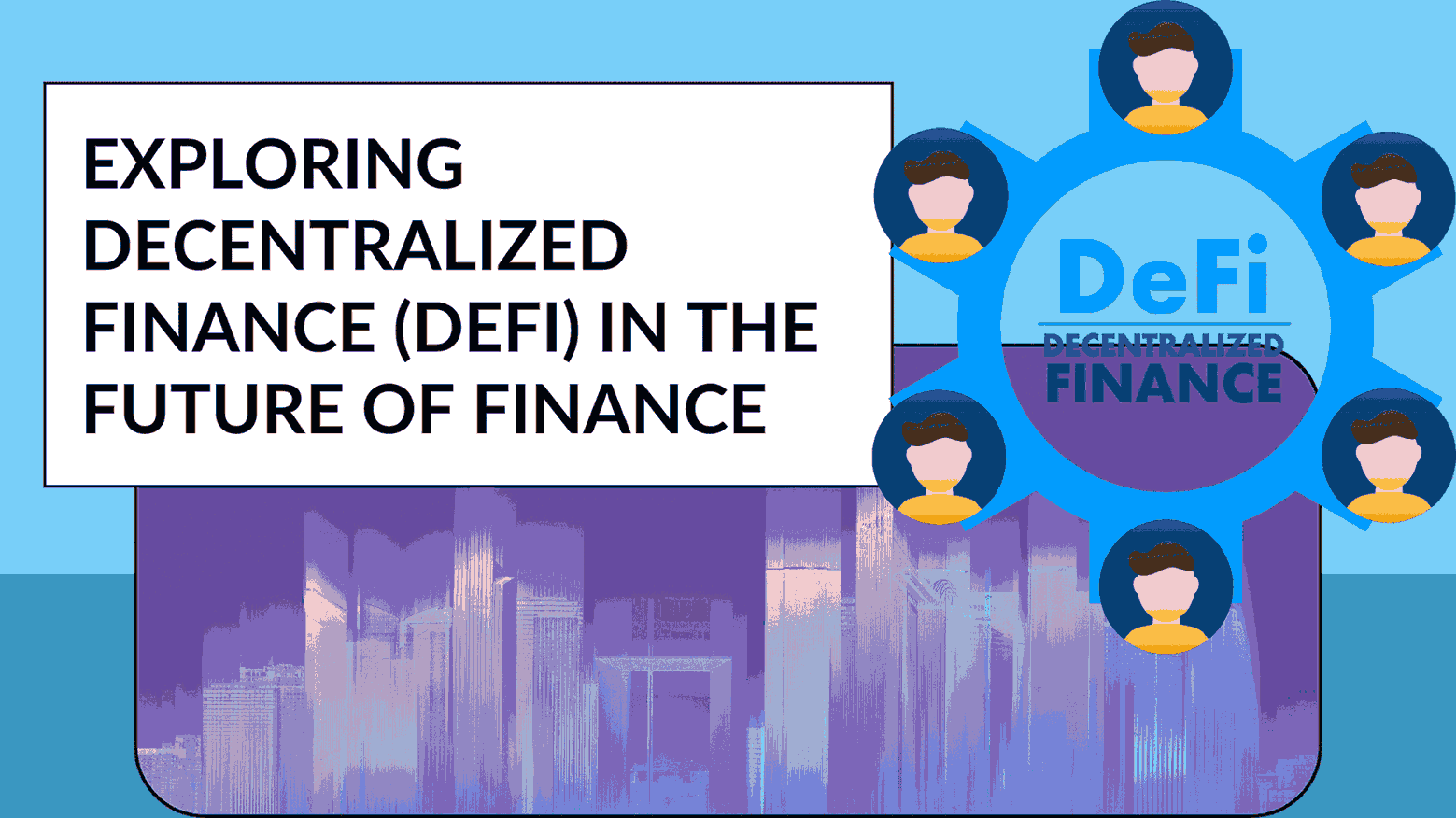Exploring decentralized finance (DeFi) in the future of finance
- Crypto


Exploring decentralized finance (DeFi) in the future of finance
Decentralized Finance (#DeFi) has become a groundbreaking force within the blockchain and cryptocurrency realm, offering an alternative to traditional financial systems. In this article, we will delve into the world of DeFi, examining its fundamental principles, its advantages, and the various applications it empowers. We will also take a closer look at the challenges facing the growth of DeFi protocols and the transformative impact they could have on the future of finance.
Understanding Decentralized Finance (DeFi)
Decentralized Finance, or DeFi, is the innovative use of blockchain technology and smart contracts to create open, transparent, and permissionless financial systems. Unlike conventional financial systems that rely on intermediaries like banks and financial institutions, DeFi protocols harness the potential of decentralized networks to facilitate peer-to-peer transactions and eliminate the need for intermediaries.
DeFi Applications and Use Cases
Decentralized Finance encompasses a wide array of applications and use cases that are reshaping the financial landscape. Here are some prominent ones:
- Decentralized lending and borrowing platforms: Platforms such as Compound and Aave allow users to lend their crypto assets and earn interest or borrow assets by collateralizing their holdings. These platforms operate through smart contracts, which automatically execute lending and borrowing transactions based on predefined conditions.
- Automated market makers (AMMs) and decentralized exchanges (DEXs): AMMs like Uniswap and SushiSwap enable users to trade cryptocurrencies directly from their wallets without relying on a centralized exchange.
- Yield farming and liquidity mining: These mechanisms incentivize users to provide liquidity to DeFi protocols in exchange for rewards.
- Stablecoins and decentralized stablecoin platforms: Stablecoins are cryptocurrencies designed to maintain a stable value, often pegged to a fiat currency like the US Dollar.
- Insurance and risk management protocols: Projects like Nexus Mutual offer decentralized insurance coverage for smart contract vulnerabilities and other risks.
- Decentralized derivatives and prediction markets: Projects like Synthetix and Augur enable users to trade synthetic assets and participate in prediction markets.
Benefits and Advantages of DeFi
Decentralized Finance offers several benefits and advantages that have contributed to its rapid growth and adoption:
- Financial inclusion: DeFi opens up financial services to anyone with an internet connection, bypassing traditional barriers such as geography and identity.
- Enhanced transparency and security: DeFi protocols leverage the transparency and immutability of blockchain technology, reducing the risk of fraud and manipulation.
- Interoperability and composability: DeFi protocols are built on open standards, allowing for interoperability between different applications and platforms.
- Programmable money and automation: Smart contracts in DeFi allow for the automation of financial transactions and the execution of predefined conditions.
Challenges and Risks in DeFi
While DeFi offers numerous opportunities, it also faces several challenges and risks that need to be addressed:
- Smart contract vulnerabilities: As DeFi relies heavily on smart contracts, vulnerabilities in the code can lead to financial losses and security breaches.
- Regulatory uncertainty: The regulatory landscape surrounding DeFi is still evolving.
- Market volatility and liquidity risks: DeFi protocols are susceptible to market volatility, and sudden price fluctuations can impact the value of assets held within the ecosystem.
The Future of DeFi
As we look ahead, the future of Decentralized Finance appears promising. Here are some developments to watch out for:
- Scalability solutions: Ethereum, the leading platform for DeFi, is actively working on Ethereum 2.0 addressing scalability issues and improving transaction throughput.
- Integration with traditional finance: DeFi has the potential to bridge the gap between traditional finance and blockchain-based systems.
- Increased adoption and user-friendly interfaces: User experience improvements and user-friendly interfaces will drive wider adoption of DeFi applications.
- Regulatory frameworks: Regulatory frameworks specific to DeFi are likely to emerge as governments and regulatory bodies address the growing impact of this sector.
Conclusion
Decentralized Finance is revolutionizing the financial industry by introducing transparent, permissionless, and innovative financial systems. While challenges and risks exist, the potential for financial inclusion, enhanced security, and the development of new financial instruments make DeFi an exciting space to watch. As the ecosystem continues to evolve, it is essential for users, developers, and regulators to collaborate and navigate the complexities to unlock the full potential of DeFi. The future of finance is indeed decentralized.
For further reading on this topic, you can check out these resources: The Rise of Decentralized Finance, DeFi and the Future of Finance, Decentralized Finance: The Unrivaled Future, and The Rise of Decentralized Finance.
In conclusion, as we continue to explore the future of decentralized finance (DeFi), it’s important to stay informed and equipped with the right tools to navigate the complexities of the SaaS landscape. This is where Subscribed.FYI comes in, offering a centralized platform to access comprehensive information about SaaS tools, compare, evaluate, and select the best options for specific requirements. With the ability to unlock secret deals and save big on 100+ SaaS tools, as well as manage all subscriptions in one place, Subscribed.FYI is a valuable resource for freelancers, agencies, and teams looking to streamline their SaaS stack and make informed decisions.
For those interested in exploring the SaaS tools mentioned in this article, here are the relevant products with their official website links:





